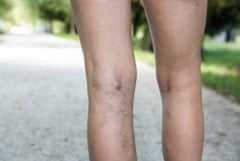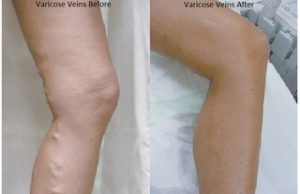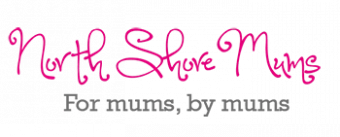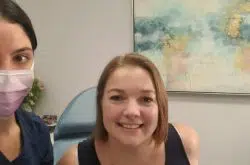It’s one of the less talked-about side effects of pregnancy – varicose veins. The experts at Crows Nest Cosmetic & Vein Clinic explain the different types and how you can manage them.
Although they’re not always on show, varicose veins are actually very common among both women and men. In fact, 30% of women and 25% of men get them in their lifetime. The risk of them occurring can be increased by factors like family history, pregnancy and having an occupation that involves prolonged standing.

An example of varicose veins
Most people recognize varicose veins that are at the skin surface, and look like blue grapes, however people can have varicose veins without those obvious, telltale surface veins. Often these people experience symptoms like aches and pains, heaviness, tired legs, cramps and restless leg syndrome. These symptoms are often worse after prolonged standing or on hot days. Occasionally sufferers may also have swollen legs, with increased pigment and spider veins in the ankles and feet. Elevating their legs and wearing compression stockings often improves their symptoms.
There are two kinds of varicose veins in pregnancy:
Type One:
The first occurs where people don’t have varicose veins before they fall pregnant.
In this case a combination of the pressure exerted by the pregnant uterus on the great veins in the abdomen causes the pressure in the leg veins to increase, and frequently damages the valves within the superficial veins, causing them to become varicose veins. The very high hormone levels that occur in pregnancy also increases the risk of both varicose and spider veins. A small percentage of these varicose veins can return to normal after the pregnancy but the majority do not. In this case the varicose veins may become larger and more painful in the years after the pregnancy.
Type Two:
 The second type occurs when varicose veins were present before pregnancy.
The second type occurs when varicose veins were present before pregnancy.
In this case the pressure caused by the pregnant uterus compressing the abdominal veins causes the varicose veins to become much larger, and more painful. Once this has occurred it is very unlikely that they will regress after delivery.
For this reason it is now quite a good idea to treat existing varicose veins before you plan a pregnancy. Now that surgery is no longer the only option, less invasive ultrasound based treatments are useful in this situation. For example Ultrasound Guided Sclerotherapy and Endovenous Laser Ablation.
Crows Nest Cosmetic & Vein Clinic is one of Sydney’s most experienced vein clinics. Dr Roberts is one of Australasia’s most experienced vein doctors (Phlebologists). He has completed thousands of procedures using ultrasound guided sclerotherapy, Endovenous Laser Ablation and microsclerotherapy.
All vein treatments at Crows Nest Cosmetic & Vein Clinic are non-surgical, require no down time, no time away from family and no hospital stay! Medicare rebates apply.
If you would like to know more about your vein health please phone the Crow’s Nest Cosmetic & Vein Clinic on 02 9906 1555 to book a consultation. First consultation is covered by Medicare.













